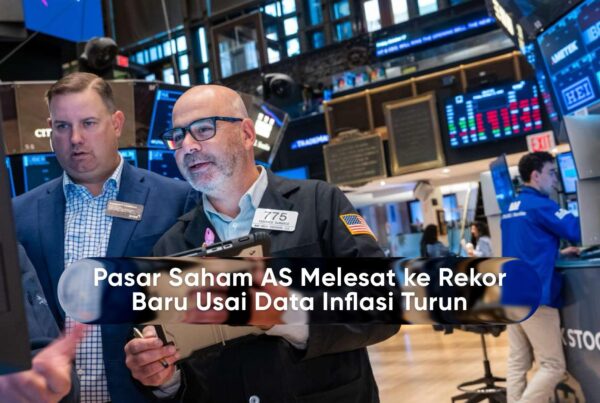Manila– The ripples on the global economic stage are increasingly felt afterU.S. tariff policyDirectly slowed the growth rate of one of Asia's giants, India. The Asian Development Bank (ADB) in its latest report,Asian Development Outlook (ADO) September 2025 Editionofficially trims India's economic growth forecast to 6.5% for 2025 and 2026. This figure is lower than the previous forecast in April, which pegged growth at 6.7% and 6.8%.
This revision step highlights how vulnerable the economies of developing countries are to trade turmoil caused by protectionism. ADB says that external pressure, especially from the high tariffs imposed by Washington, has become the main factor weighing on New Delhi's economic prospects. Meanwhile, the uncertainty surrounding global trade is also dampening investment sentiment and external demand, which has long been one of the main engines driving India's economy.
Behind ADB's Revision of India's Economic Growth Projections
The Asian Development Bank (ADB) explicitly explains that the global trade environment shaped by tariffs and new trade agreements has created significant challenges. Although India's domestic economic fundamentals are still considered strong, external factors have proven to exert more pressure than initially expected. This slowdown not only threatens India's ambitious goal of becoming a leading economic power, but also sends a warning signal to the entire Asia-Pacific region.
This downward revision reflects the complex dynamics. On the one hand, strong public investment and the loosening of monetary policy by the Reserve Bank of India are expected to support economic activity. However, on the other hand, the negative impact ofU.S. tariff policyis considered more dominant, hindering the pace of exports and creating uncertainty for industry players who rely on the American market.
External factors as the main trigger of the slowdown.
The September 2025 ADO report underscores thatU.S. tariff policythat have been implemented since August have become the main catalyst for the slowdown. The additional tariffs imposed on various Indian export products—ranging from textiles and jewelry to automotive components—directly reduce the competitiveness of those goods in the American market. This has resulted in a decrease in export volume and has suppressed the incomes of producers in India.
In addition, ADB also highlights the general weakening of global demand. Trade tensions that are not only between the U.S. and India, but also involve China and other trading partners, have created a domino effect. Global supply chains are disrupted, production costs are rising, and worldwide business sentiment tends to decline. As a result, demand for goods from developing countries such as India also contracted.
This condition is worsened by volatility in the financial markets. Policy uncertainty often triggers capital outflows fromemerging marketstowards assets that are considered safer (safe haven). For India, this risks putting downward pressure on the rupee's exchange rate and increasing borrowing costs, which could ultimately hinder private investment and domestic consumption.
Challenges from India's domestic sector
Although external pressures have become the main focus, the ADB does not turn a blind eye to the internal challenges that India also faces. A slowdown in the private consumption sector, which accounts for more than half of the country's GDP, has become one of the concerns. Controlled inflation should boost purchasing power, but consumer confidence, which has declined due to global economic uncertainty, seems to restrain the pace of household spending.
Meanwhile, the private investment sector also shows signs of sluggishness. Investors tend to take a stance.wait and seeAmid trade tensions that have not shown signs of abating. Without any significant new investment, production capacity and job creation become limited, which in turn could slow the momentum of economic growth in the long term.
The Indian government, under the leadership of Prime Minister Narendra Modi, has responded with a variety of fiscal stimuli and structural reforms. However, the effectiveness of these measures in the short term is still being tested by the onslaught of external factors that are beyond New Delhi's control. It is this combination of global pressures and domestic challenges that forms the basis for the ADB's calculation in revising India's growth projection downward.
Escalation of the Trade War and Its Impact on Key Sectors
The trade relationship between the United States and India has entered a tumultuous phase over the past few years. Washington has repeatedly voiced its concerns about the trade deficit with New Delhi and accused India of implementing unfair trade practices. The peak of this tension is the U.S. decision to revoke the status.Generalized System of Preferences(GSP) for India, which previously allowed thousands of Indian products to enter the U.S. market without tariffs.
India responded by raising import tariffs on 28 US-origin products, including almonds, apples, and several other agricultural products. This tit-for-tat action creates a negative spiral that harms both sides. However, with a much larger economy of scale,U.S. tariff policyhas proven to have a more damaging impact on India's economy, which is highly dependent on exports.
Analysis of the Impact of U.S. Tariff Policy on the Indian Industry.
Labor-intensive sectors in India have become the main victims of the escalation of this trade war. The textile and garment industry, which employs millions of people, is facing serious challenges because its products have become more expensive in the U.S. market. As a result, orders from American buyers declined drastically, and many manufacturers were forced to scale back their production. The jewelry and precious stones industry also faces similar conditions, which is one of the largest contributors to India's exports.
In addition, other manufacturing sectors such as automotive and its components are also feeling the impact. Disruptions in the global supply chain are increasing the cost of importing raw materials, while export tariffs squeeze profit margins. According to reports from various industry associations in India, thousands of small and medium-sized enterprises (SMEs) that are part of the global supply chain are at risk of going out of business if these tensions continue.
The Indian government seeks to mitigate this impact by seeking alternative export markets and promoting domestic consumption through the 'Make in India' campaign. However, replacing a market as large as the United States is not an easy task and takes time.
India's Response and the Direction for Future Policy
Facing this pressure, the Indian government is at a crossroads. On one hand, there is domestic pressure to take harsher retaliatory actions against the U.S. However, on the other hand, New Delhi realizes that open confrontation will only worsen the situation. So far, India has preferred the path of diplomacy and negotiation to seek a solution acceptable to both sides.
Several rounds of trade negotiations have been conducted, although they have not yielded significant results. India is offering a number of concessions, including opening its markets more widely to dairy products and medical equipment from the U.S. However, Washington demands a greater commitment, particularly regarding issues of intellectual property rights and freer market access.
In the future, India is expected to continue strengthening its trade alliances with other economic blocs, such as the European Union and ASEAN member states, to reduce its dependence on the US market. In addition, the focus on strengthening the domestic economy will be the main priority. According to the analysis fromreliable external sources such as The World Bank, economic diversification and the improvement of domestic competitiveness are key to developing countries' survival amid global uncertainty.
Global Context: Broad-based Economic Slowdown
The impact ofU.S. tariff policyNot only felt by India. The ADB report also notes a slowdown in growth across the Asia-Pacific region, which is projected to grow only 4.8% in 2025, down from the previous estimate of 4.9%. This shows that protectionism and trade uncertainty have become a real threat to global economic stability.
Southeast Asian countries, whose economies are highly integrated with global supply chains, including those that feel the impact the most. The slowdown in China due to the trade war with the US also indirectly reduces demand for raw materials and semi-finished goods from neighboring countries. This phenomenon underscores how interconnected the global economy is today.
Ongoing risk that looms over the global economy.
ADB warned that the downside risk remains very high. The potential imposition of additional tariffs by the United States, especially in strategic sectors such as semiconductors and pharmaceuticals, could trigger a new wave of uncertainty. Moreover, the ongoing geopolitical tensions in various parts of the world can also disrupt the flows of trade and investment.
Global financial markets remain vulnerable to turmoil. Every escalation in the trade war can trigger selling pressure in the stock market and capital flight from developing countries. Central banks around the world face a difficult policy dilemma: on the one hand they must maintain price stability, but on the other hand they need to support economic growth that is slowing.
Policy coordination at the global level is becoming increasingly urgent. International forums such as the G20 and the World Trade Organization (WTO) are expected to play a more active role in easing tensions and reestablishing a rules-based trading order. Without concerted efforts, the risk of a global recession will continue to rise.
Asia's position in the midst of uncertainty
Despite facing heavy challenges, the developing Asian region remains a bright spot in the global economy. With relatively strong fundamentals, a dynamic population, and a growing middle class, Asia still has great long-term growth potential. However, in order to realize that potential, the countries in this region need to adapt to the new global landscape.
Enhancement of regional cooperation, such as through agreementsRegional Comprehensive Economic Partnership(RCEP) can be one of the strategies to reduce the negative impacts of protectionism. Moreover, investments in innovation, digital technology, and infrastructure will be the key to boosting competitiveness and creating new sources of growth.
Ultimately, the ability of Asian countries, including India, to navigate this era of uncertainty will depend greatly on domestic structural reforms and their ability to work together in facing shared challenges.
Overall,U.S. tariff policyhas become a determinant factor that reshapes the global economic landscape. The ADB's downward revision of India's growth projection is concrete evidence of the negative impact of protectionism. This situation underscores that in an interconnected world, no country is immune to trade fluctuations, and sustainable solutions can only be achieved through dialogue and international cooperation.
For further in-depth analyses on the global economy and market dynamics, continue to follow the latest news developments only at Insemination.
Discover more from Insimen
Subscribe to get the latest posts sent to your email.










